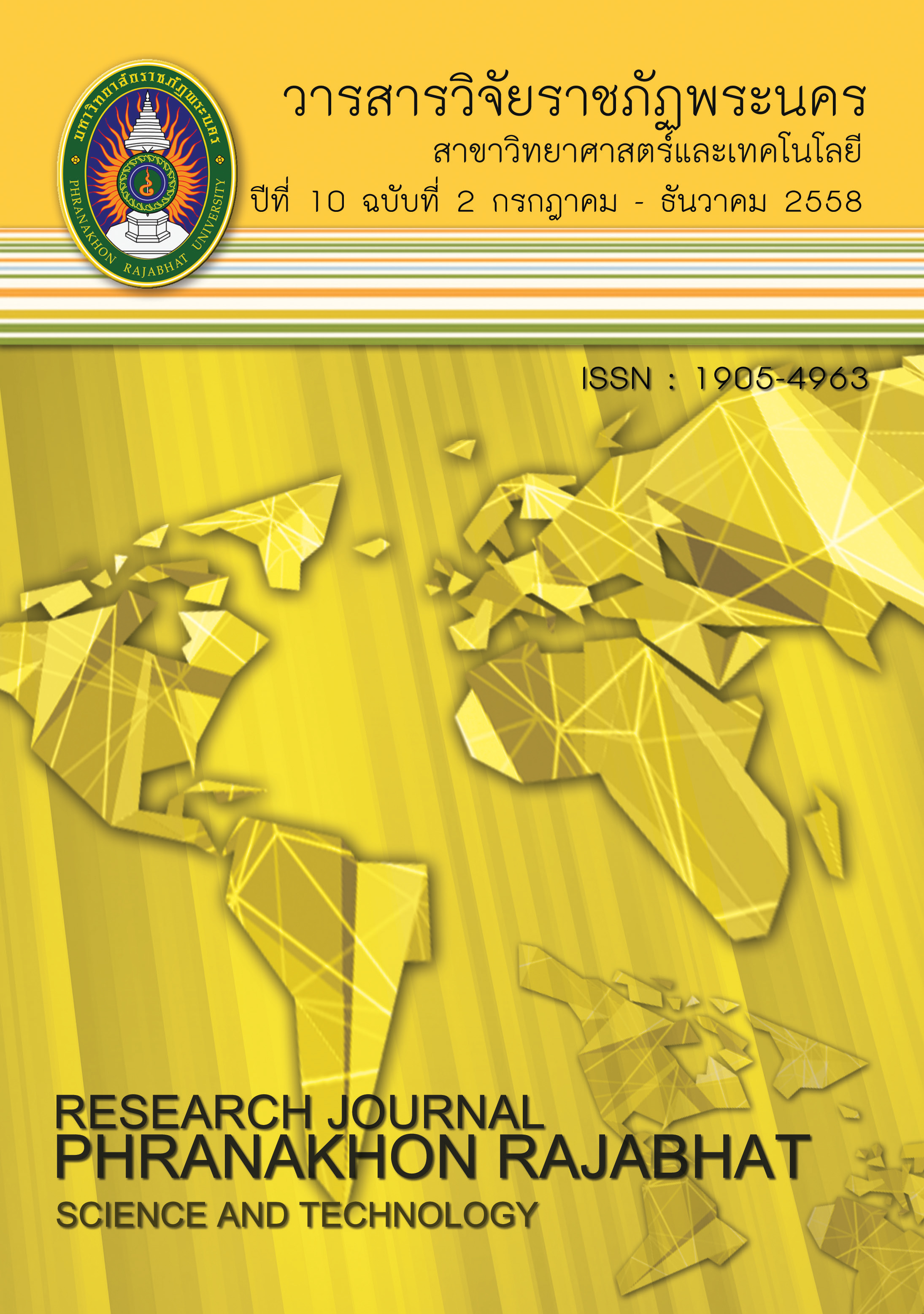โครงสร้างพันธุศาสตร์ประชากรและประวัติประชากรของปลาตะกรับ (Scatophagus argus) ในภาคใต้ของประเทศไทย
Keywords:
คอนโทรลรีเจียน, โครงสร้างพันธุศาสตร์ประชากร, ประวัติประชากร, ปลาตะกรับ, Control region, Population genetic structure, Demographic history, Spotted scatAbstract
ศึกษาโครงสร้างพันธุศาสตร์ประชากรและประวัติประชากรของปลาตะกรับ (Scatophagus argus) ในภาคใต้ของประเทศไทย โดยวิเคราะห์จากความหลากหลายของลำดับนิวคลีโอไทด์ในไมโทคอนเดรียบริเวณคอนโทรลรีเจียนขนาด 611 คู่เบส เก็บตัวอย่างจากชายฝั่งทะเลภาคใต้ฝั่งตะวันออกจำนวน 3 จังหวัดคือปัตตานี สงขลา และนครศรีธรรมราช และฝั่งตะวันตกจำนวน 3จังหวัด คือ จังหวัดสตูล กระบี่ และพังงา จำนวน 100 ตัว พบว่ามีแฮโพลไทป์ทั้งหมด 56 แฮโพลไทป์ประกอบด้วย shared haplotye 6 แฮโพลไทป์ และ rare haplotype 50 แฮโพลไทป์ ค่า haplotypediversity และ nucleotide diversity มีค่า 0.933 และ 0.011 ตามลำดับ จากการทดสอบneutrality test พบว่าค่า Tajima’s D และ Fu’ Fs มีค่า -1.710 และ -25.005 และมีนัยสำคัญทางสถิติ ซึ่งเบี่ยงเบนไปจากค่าคาดหวังตาม neutral evolution ในทิศทางที่แสดงว่าประชากรปลาตะกรับในภาคใต้เคยมีการขยายขนาดประชากร การทดสอบ mismatch distribution พบว่าประชากรน่าจะมีการขยายขนาดมาประมาณ 270,000 ปีที่ผ่านมาในยุคไพลสโตซีน การวิเคราะห์โครงสร้างทางพันธุกรรมของประชากรพบว่ามีความแตกต่างระหว่างประชากรปลาตะกรับจากฝั่งทะเลตะวันออกและฝั่งทะเลตะวันตก ซึ่งน่าจะแสดงให้เห็นว่ามีปัจจัยที่ขัดขวางการผสมพันธุ์ระหว่างถิ่นอาศัย 2 บริเวณดังกล่าวจนทำให้เกิดความแตกต่างทางพันธุกรรมขึ้น ผลการศึกษาครั้งนี้สามารถนำมาใช้เป็นข้อมูลในการจัดการปลาตะกรับในเขตภาคใต้ได้
Population genetic structure and demographic history of the Spotted scat (Scatophagus argus) in Southern of Thailand was investigated. Intraspecific variation was determined from partial sequences of mtDNA CR with a size of 611 bp. Sequences of 100 individuals from Eastern coast (Pattani, Songkhla and Nakhon Si Thammarat provinces) and Western coast (Satun, Krabi and Phang Nga province) were analyzed. A total of 56 haplotypes, consisting of 6 shared and 50 rare haplotypes, were identified. Estimated values of haplotype diversity and nucleotide diversity were 0.933 and 0.011, respectively. The results of neutrality tests, both Tajima’s D and Fu’s Fs statistics, yielded negative values (-1.710 and -25.005, respectively), which were statistically significant deviation from the neutrality, indicating that the S. argus in Southern of Thailand had experienced population expansion. Mismatc distribution analysis indicated that a possible expansion that may occur 270,000 years ago during the Pleistocene glaciations period. The AMOVA analysis also revealed genetic differentiation of S. argus between the Eastern and Western coast populations, suggesting the existence of a barrier to reproductive strategy between these two area. This study are necessary information contributing to efficient strategies to conserve this species in Southern of Thailand.
Downloads
Issue
Section
License
โปรดกรอกเอกสารและลงนาม "หนังสือรับรองให้ตีพิมพ์บทความในวารสารวิจัยมหาวิทยาลัยราชภัฏพระนคร สาขาวิทยาศาสตร์และเทคโนโลยี" ก่อนการตีพิมพ์




